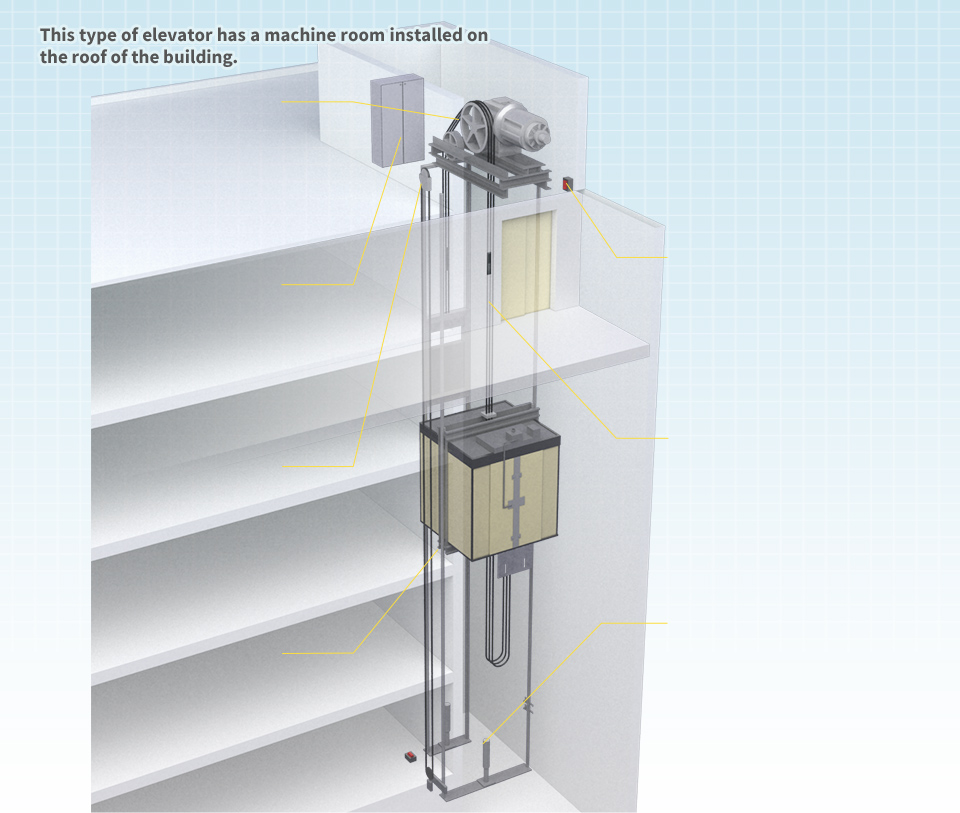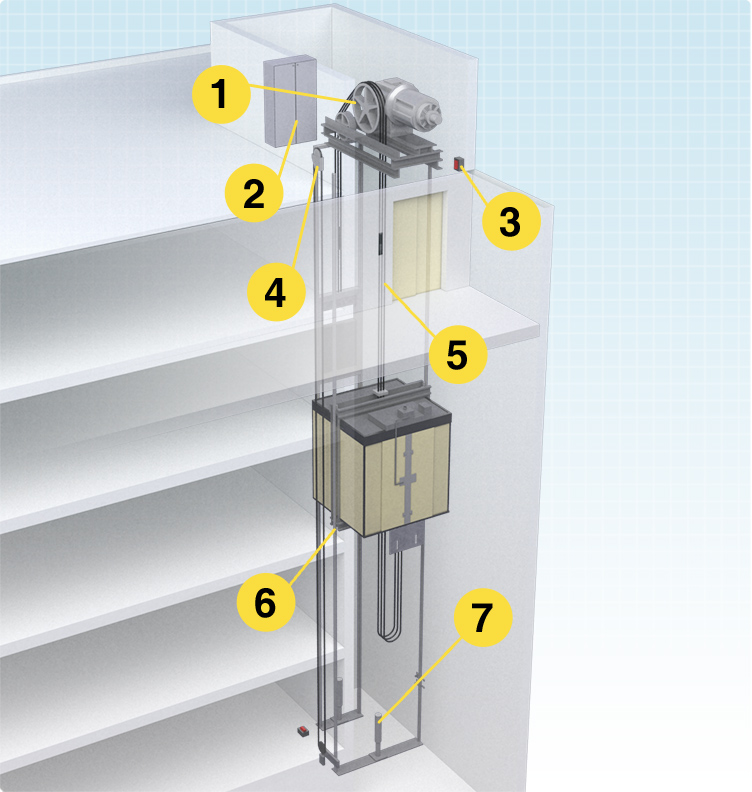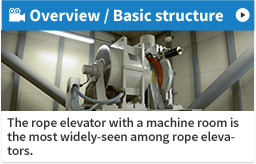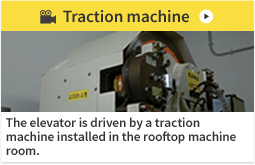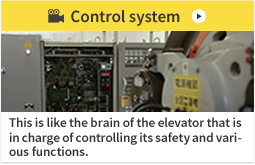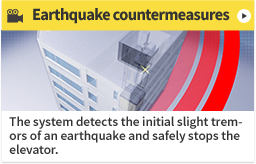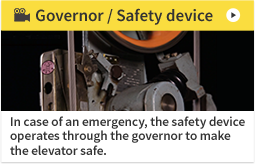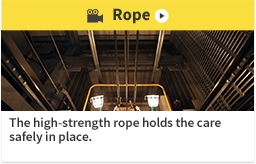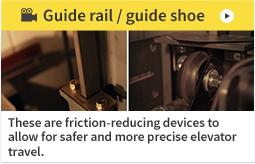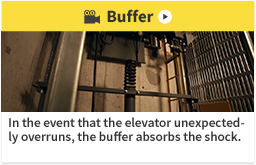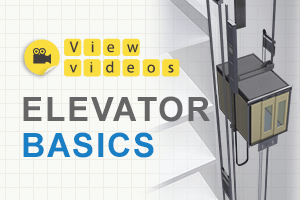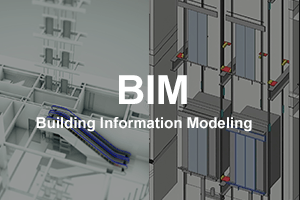Elevator BasicsRope Elevators
(with machine room)
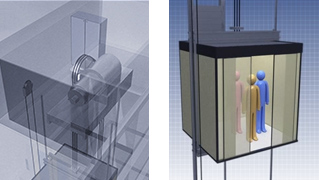
Rope elevators are standard elevators efficiently moved up and down by an electric traction machine that uses a wire rope balancing the car against counterweights.
The most widely-distributed type are the rope elevators with a traction machine and a controller housed in the machine room on the rooftop.
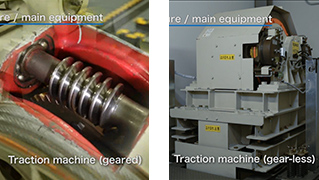
Rope elevators are driven by the traction machine located in the rooftop machine room. There are geared- and gearless-type traction machines.
The gearless-type traction machine, through the latest inverter control, offers smoother acceleration and deceleration than the geared-type traction machine which uses a reducer.
Gearless-type traction machines also contribute largely to the miniaturization of devices in the machine room as well as improvements to energy efficiency and comfort.
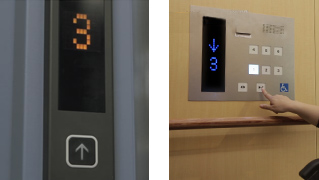
The control system is the device that controls the movement of the elevator. It’s also known as the brain of the elevator. It not only safely drives, halts, accelerates and decelerates the elevator in a smooth fashion, but also uses inverter control to precisely stop the elevator in position.
Should there be multiple elevators, the drive functions are allocated by a group control system to efficiently move the elevators. The elevators also provide voice guidance that informs passengers of the elevator status in both the hall and inside the car
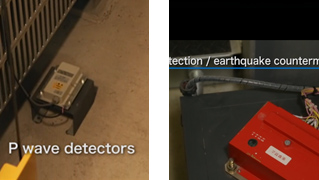
Seismic sensors detect the tremors of an earthquake and safely stop the elevator at the closest floor. There is a P-wave sensor which detects the initial tremors, and an S-wave sensor that detects the main tremors.
There are also other countermeasures recommended to prevent equipment falling from the machine room, ropes coming off their pulleys, and ropes and cables becoming caught on protruding objects inside the hoistway.
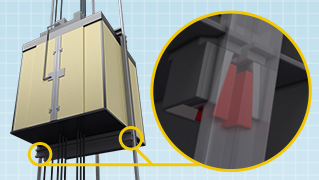
These are the safety devices to prevent the car from falling should the elevator exceed its rated speed or should the rope break for some reason. Even should the rope break and the car falls at a certain speed, the governor begins operating and a connected rope is tensioned.
Then the emergency brake on the car instantly drives a wedge in an open space in the guard rail to halt the car.
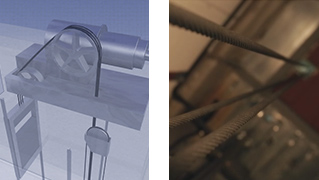
The wire rope connects the car with the counterweight.
There are two or more main ropes, which are made up of intertwined steel wires, to provide a safety rate (strength) stipulated by the Building Standards Act.
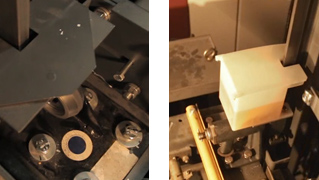
The guide rail is what allows for the safe and precise movement of the car and counterweight.
This rail offers a path for the elevator to ascend and descend. The component which comes into contact with the guide rail and the car is called the guide shoe. The guide shoe reduces friction through the application of lubricant. Roller guides, which have more friction-reducing functionality, are used for high-speed elevators.

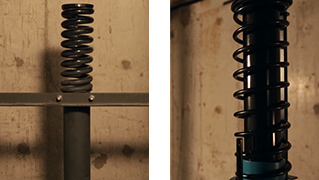
Should the car unexpectedly overrun, there are buffers in place to absorb the shock.
For elevators with a rated speed of 60m/min oil buffers are used, while spring buffers are used for elevators that travel at or below 45m/min.



